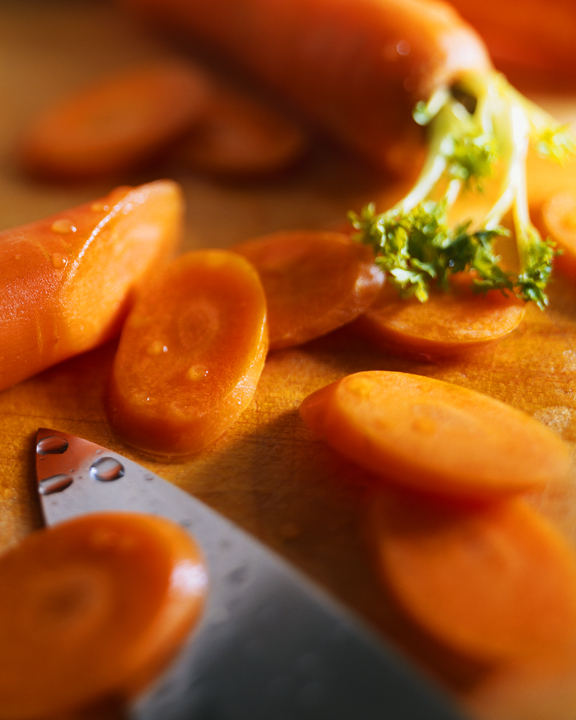Glycemic Load: What you should know
 Sunday, March 27, 2011 at 7:44PM
Sunday, March 27, 2011 at 7:44PM  In my last post I explained that the popularity of glycemic index among dieters is based on myths about the affect of insulin on hunger, fat storage and weight gain. Glycemic index does have value however, just not what the fad-diet books claimed.
In my last post I explained that the popularity of glycemic index among dieters is based on myths about the affect of insulin on hunger, fat storage and weight gain. Glycemic index does have value however, just not what the fad-diet books claimed.
The glycemic index (GI) value of a particular food tells you how rapidly exactly 50 grams of carbohydrate from that food will move into your blood. The weakness of the glycemic index is that you don't generally eat food portions that provide exactly 50-grams of carbohydrate. Take for example carrots—which some popular diet books tell people to avoid because of their high glycemic index of (131%). Since it takes 1½ pounds of carrots to ingest 50 grams of carbohydrate, their high glycemic index is misleading. A typical serving (½ cup) consists of just 2.1 ounces and provides less than 5 grams of carbohydrate.
To identify how different serving sizes of food, or whole meals, affect blood sugar you need to consider both the glycemic index and the amount of carbohydrate in the serving. That's exactly what glycemic load does.
When we consider the glycemic load of the ½ cup of carrots it amounts to just 8.1. For comparison an equivalent serving of baked potato, which has a similar glycemic index to carrots, has a glycemic load of 34.6. Relative to carrots, potatoes are carbohydrate dense, so while both have a high glycemic index, only potatoes have a correspondingly high glycemic load.
Glycemic Load Disease Link: It turns out that diets with high glycemic loads are strongly associated with heart disease and type 2 diabetes. High glycemic load diets raise triglycerides and lower HDL (good cholesterol) which both increase your risk of having a heart attack. Additionally, if you are genetically predisposed to diabetes (and are sedentary and already overweight), the steady high demand on the pancreas to produce insulin may trigger the disease.
The Bottom Line: By following a few simple guidelines you can lower the glycemic load of your diet—without calculators or GI tables! A good place to start is with avoiding all but the occasional soft drink (and other sugar-sweetened beverages). Second, replace processed and refined grain products (snacks, desserts, cereals, breads, rice, and packaged foods) with (whole) fruit, vegetables, whole grain products and beans. These foods are both rich in nutrients and fiber which modulates blood sugar. Finally, you can replace some of the potatoes in your diet with sweet potatoes, yams, and even beans or lentils. You don’t have to make these changes all of the time—you’ll still make a big difference in your health even if you do it only half of the time.
Best,
-Dorene
_________
Is there a question about weight loss or dieting that you want answered? Comment here, or email me at dorene@beyonddiets.com.
If this is the kind of information you appreciate, you may also like my book: The NEW Healthy Eating & Weight Management Guide.

Reader Comments